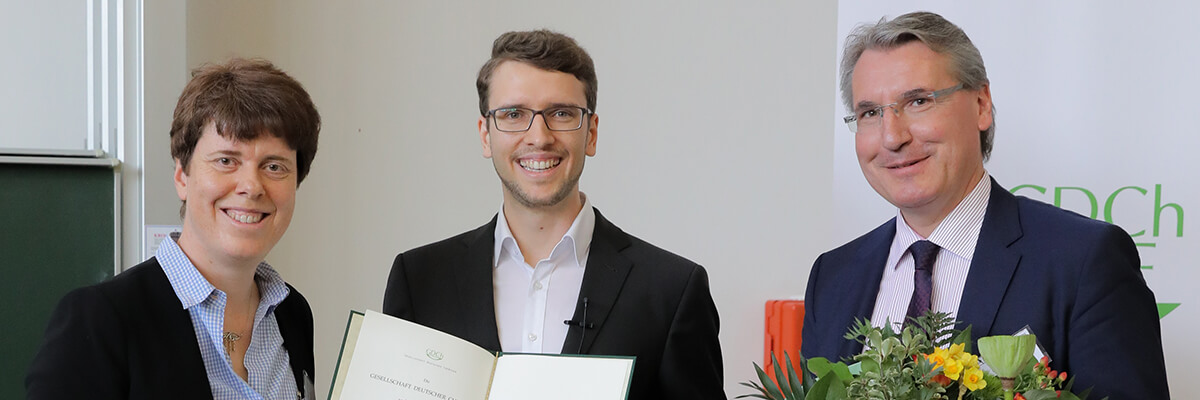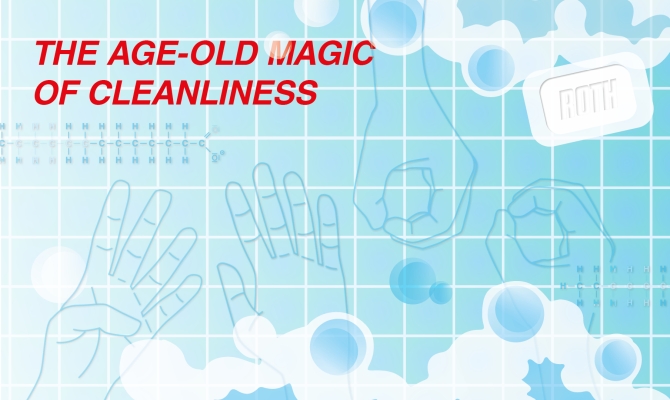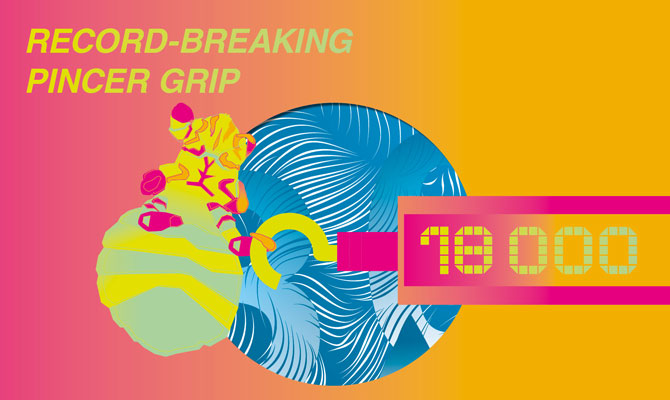
One year on: interview with Carl ROTH Young Talent Award winner Sven Herrmann
At just 28 years old, Sven Herrmann achieved every researcher’s dream: during his doctoral project at the University of Ulm, he developed no fewer than three approaches for forward-thinking possible applications for a single material in the research lab.
Mr Herrmann, last year you won the Carl ROTH Young Talent Award – what were you working on exactly?
In a nutshell, on the properties of polyoxometalate-based materials and composites – particularly ionic liquids that have polyoxometalates as anions, known as POM-ILs. Through observations in the laboratory, I came across the idea that they could offer outstanding self-repairing corrosion protection thanks to their stability under acidic conditions and their good adhesion to metals. But there is even more to these molecular structures: they are hydrophobic, antibacterial and can bind toxic heavy metals. Using immobilisation on porous material, I harnessed these properties, namely as a water filter that even absorbs uranium and E. coli bacteria.
What is special about your discovery?
I think two factors come into play here: time and practical application. In just one and a half years, I managed to drive forward fundamental research into polyoxometalate-based ionic liquids from material development to proof of concept. Developing a finished application in such a short space of time is very unusual in research. And with the corrosion protection and the filter material, there were actually two finished applications for the same material! Doubtless that was one of the reasons why I won the Carl ROTH Young Talent Award too.
How did you come across the Carl ROTH Young Talent Award in the first place?
I did in-depth research into opportunities where I could submit my work. I found out about the Carl ROTH Young Talent Award in “Nachrichten aus der Chemie” magazine. It fitted perfectly with the subject matter I was working on, so I tried my luck.
How did the world of research react to your findings?
Very enthusiastically, especially scientific journals. My article on corrosion protection was even considered a “hot paper” in the journal “Angewandte Chemie”. It also attracted some interest in international research too.
Was there any response from industry?
Yes, there was a lot of curiosity. For example, BRITA, the water filter manufacturer, expressed an interest in using POM-ILs for water purification. The main advantages over other filter materials such as activated carbon are the ease of use and antibacterial effect. A second company I was in contact with was IoLiTec, an ionic liquid manufacturer. This mainly involved examining the large-scale feasibility of POM-ILs. Chemical companies such as BASF expressed an interest too.
Have any of your approaches been applied in practice yet?
No, it’s still too soon for that. A lot of questions still need clarifying, especially regarding production and atom economy or efficiency. In addition, POM-ILs are a completely new material – and new materials always involve risks. They have to pass a lot of tests before they can be used in the chemical industry. It’s a long process – I guess it will take at least five years.
How has your research been going since you won the Carl ROTH Young Talent Award?
Among other things, we have carried out antimicrobial studies together with Scott Mitchell from the University of Zaragoza to further research the use of POM-ILs in water purification. And I have also come across a third area of application: energy storage! A single polyoxometalate ion can actually store up to 24 electrons. If you put all that in a conductive polymer, there is huge energy storage potential.
To what extent has the Carl ROTH Young Talent Award helped you with that?
The Carl ROTH Young Talent Award made work a lot easier for me and my doctoral supervisor. I had much more freedom in my research due to having my own financing along with my grant from the chemical industry fund. In addition, I was only able to actually claim ownership of my discovery thanks to the award. Without the financial means, I would definitely not have applied for property rights to it and would not have had protection now for a potential breakthrough.
How are things going now with your discovery?
After my doctorate, I left the university field and moved into industry. I am now developing PU adhesives for car manufacturing. However, my research into POM-ILs is being continued by others.
Why did you swap POM-ILs for adhesive?
Mainly because industry is much more application-oriented. In research, a lot of things are a long way off from an actual application unfortunately. I have always wanted to help people with my work. I can do that more effectively in industry. Also having the security to make plans in my private life was an important reason for the change.
That can’t have been an easy decision after so many years of intensive and successful research.
Yes, I was a bit sad about it. But I have not given up my research entirely. I want to stay involved and still have a good relationship with my doctoral supervisor. And that’s really every researcher’s dream: to see how your own research is developed in your lifetime.
Do you have any tips for potential future prize-winners and other young researchers?
For me, the most important thing is to be open and not to close in too much on one thing. Look around you from time to time and be creative. From my own experience, I know you don’t have to overcomplicate things. It’s better to start from the fundamental material properties and think about what they could be useful for. Unfortunately it’s still often the other way around these days. What I would say by way of advice to every researcher is that no-one knows a material as well as the person who developed it!
The Carl ROTH Young Talent Award is a prize for young chemistry researchers. It is awarded every year to young chemistry scientists to recognise the development of resource-saving synthesis methods or innovative uses of chemicals. The €5,000 euro prize is given by the German Chemical Society (GDCh). The prize-winner’s research group also receives a €3,000 Carl ROTH voucher.
Any young chemistry scientists who have completed their studies (Master´s degree) less than five years before may apply for the award.
Weitere Informationen über den Carl-Roth-Förderpreis und die Bewerbungsfristen erhalten Sie hier.
Cover picture: Dietrich vom Berge, Oberursel, all rights reserved by the GDCh.





